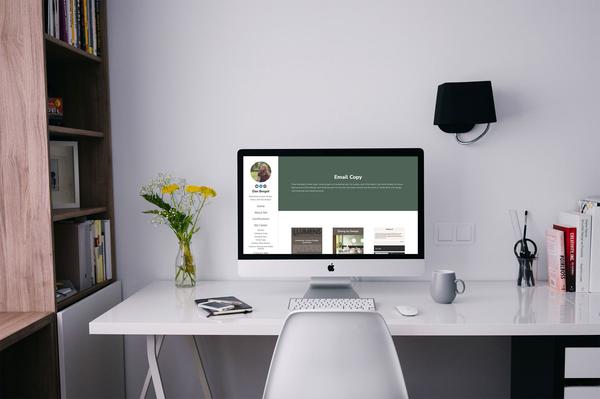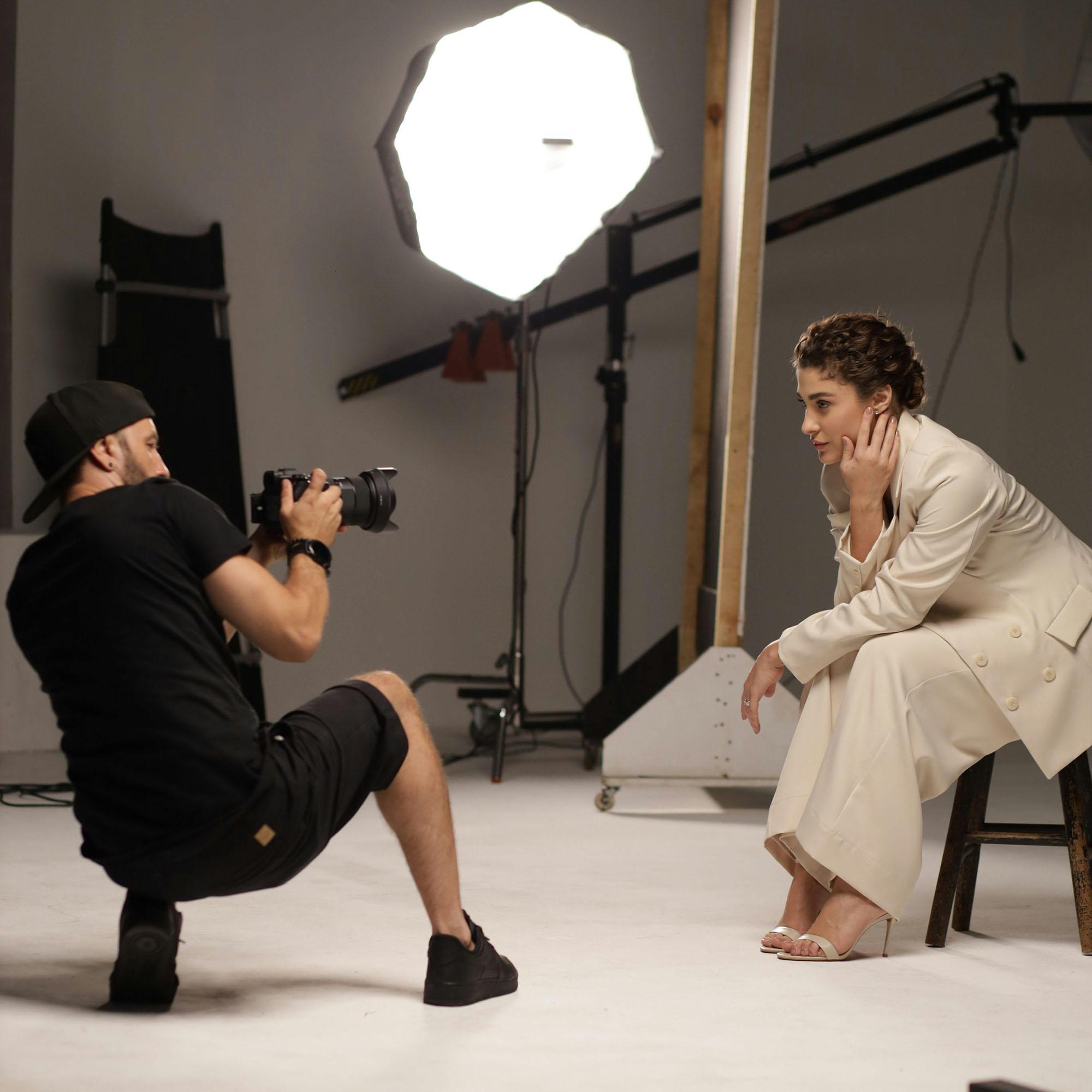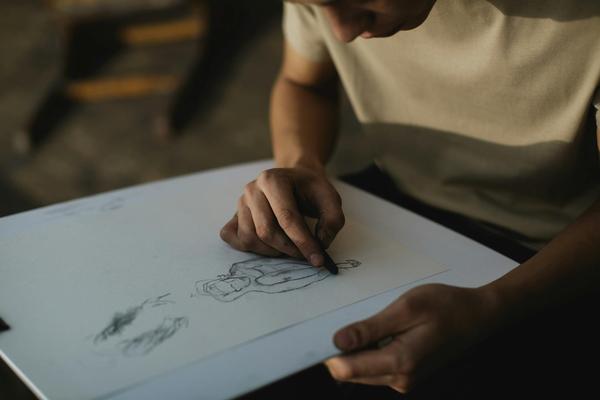
Building A Quality Character Design Portfolio (With Examples)

Sam Hindman
Published onIf it's your dream to develop character designs and watch your creations come to life on the big screen, there's good and bad news to consider. First, the good news: This is an industry that is constantly on the rise. In fact, it's expected to grow by 16% in the next ten years. The bad news? While the industry is growing, competition is growing right alongside it.
To truly stand out in this increasingly saturated industry, you have to be consistent and driven. One essential way to display this to employers is by developing a character design portfolio that is sharable, easy to digest, and full of quality content.
Today, our team at Journo Portfolio will show you exactly how to create a character art portfolio that is sure to capture the attention of potential employers. It's time to stop hiding your talent from the world and finally put it exactly where the bigwigs can see it!
Creating Characters That Stand Out
The first step, of course, is actually developing characters to put in your portfolio. After all, an empty portfolio isn't going to get you anywhere except square one. As a character designer, you need to let go of any ideas of perfection. It isn't about being the best; it's about consistently putting in the work required to better yourself bit by bit.
To help your approach to creating characters that stand out, here are some quick tips:
Understand Your Character's Backstory: A well-defined backstory gives depth and motivation to your character, making them more relatable and interesting.
Experiment with Unique Features: Don't shy away from unconventional traits or features. Unique attributes can make your character memorable.
Focus on Silhouette: A strong, recognizable silhouette helps your character stand out visually. This is important for making your character easily identifiable.
Use Color Wisely: Color can convey a lot about your character's personality and role. Thoughtful use of color can enhance your character's pizzazz.
Iterate and Refine: Understand that your first draft is probably not going to be your best! Continuously refine and tweak your design. Sometimes, the best ideas come after several iterations.
Once you've created some quality characters that you're happy enough with to present to an audience, it's time to begin building your portfolio website.
Choosing Where To Host Your Character Design Portfolio
After developing some content, it's time to choose where to begin building. If this is your first time using a website builder, don't overcomplicate things. It's important to showcase originality when building your portfolio, but it's equally as important to follow trusted frameworks of graphic design and visual balance. Meaning: Pick a host website that is both customizable and uncomplicated.
For instance, Journo Portfolio allows customization for fonts, color schemes, and general design. It also doesn't require you to learn a coding language or have a strong understanding of web development. It has simple drag-and-drop features (and handy templates) to get your site up and running as efficiently as possible.
What Should I Include In My Character Design Portfolio?
Many who aspire to be a character designer have a lot of personal experience in the practice. With so many prior designs to choose from, how do you decide what's "good enough" to include and what you should keep to yourself? This is often a major struggle for those building their character design portfolio, as first impressions can be quite meaningful in the long term.
How Many Pieces You Should Include
The first question is often, "How much is too much?" It makes sense that you don't want to overwhelm your website's visitors with dozens upon dozens of projects, but the reality is that the more is often the merrier when it comes to including designs!
In fact, the only potential issue you may run into is a cluttered appearance. Luckily, with sorting tools like the ones available through Journo Portfolio, people can easily navigate through different sub-sections of your portfolio's contents. Having a range of designs is highly important when you're new to the industry, as the primary goal is getting that first foot in the door.
Something worth mentioning (that you want to avoid) is having too few projects. It's generally recommended that, as you're starting out, you have at least five quality pieces of artwork in your portfolio. This gives people a strong impression of your personal styles and the kinds of characters that you can conjure up.
Catering To Animation Vs. Comics Vs. Video Games
While there's nothing wrong with being a generalist, your portfolio is more likely to find success if you niche it down to your desired industry. Not all character design jobs are the same! There are a lot of subtle differences in the work that you create based on the industry you want to be a part of. Here are some easy ways to curate characters based on the kind of work you'd like to do.
Animation
For animation, focus on including character turnarounds, expression sheets, and action poses. Animators need to see that your characters can move fluidly and express a range of emotions. It is important to demonstrate your understanding of character construction, proportions, and consistency across different angles.
Details To Include:
Character turnarounds: Front, back, and side views.
Expression sheets: A variety of facial expressions.
Action poses: Characters in dynamic and varied actions.
Storyboards: Optional but useful for showing narrative understanding.
Comics
In the comic industry, storytelling through your character design is great knowledge to have. Include sequential art that helps showcase your ability to tell a story through visual development. Focus on strong, clear lines and distinct character designs that stand out in black and white or color.
Details To Include:
Sequential art: Panels that tell a story.
Character interaction: Characters interacting within a scene.
Consistency: Characters maintain their look across different scenes and angles.
Video Games
For video game character design, highlight your ability to create characters that fit within the game's style and world. Include concept art that shows the character's development from initial sketches to final designs. Pay attention to details like textures, armor, and accessories, as well as how characters fit into their environment.
Details To Include:
Concept art: Development stages from sketches to final designs.
3D models: If possible, show 3D models or collaborations with 3D artists.
Textures and details: High-resolution images showing detailed textures and accessories.
Character sheets: Multiple poses and expressions.
No preference? No stress! Being able to demonstrate versatility is a highly sought-after trait in a character design role. Unless you're dead set on working within a certain industry, the most important thing to be focused on is showcasing your illustration skills.
Character Design Portfolio Examples
All of this is great to know, but it's only actionable if you see it for yourself. Below are some examples of established character designer portfolios to help give you an idea of how to create your own. Notice the small attention to detail that makes each artist seem unique!
Meg Park
If your goal is to work in animation, Meg Park has an excellent portfolio to emulate. Based in Burbank, California, Meg is a designer for Walt Disney Studios. Her skills are made clear through her vast portfolio, full of pieces that speak for themselves. Take notice that she has every project neatly categorized in its own special place to help with easy navigation.
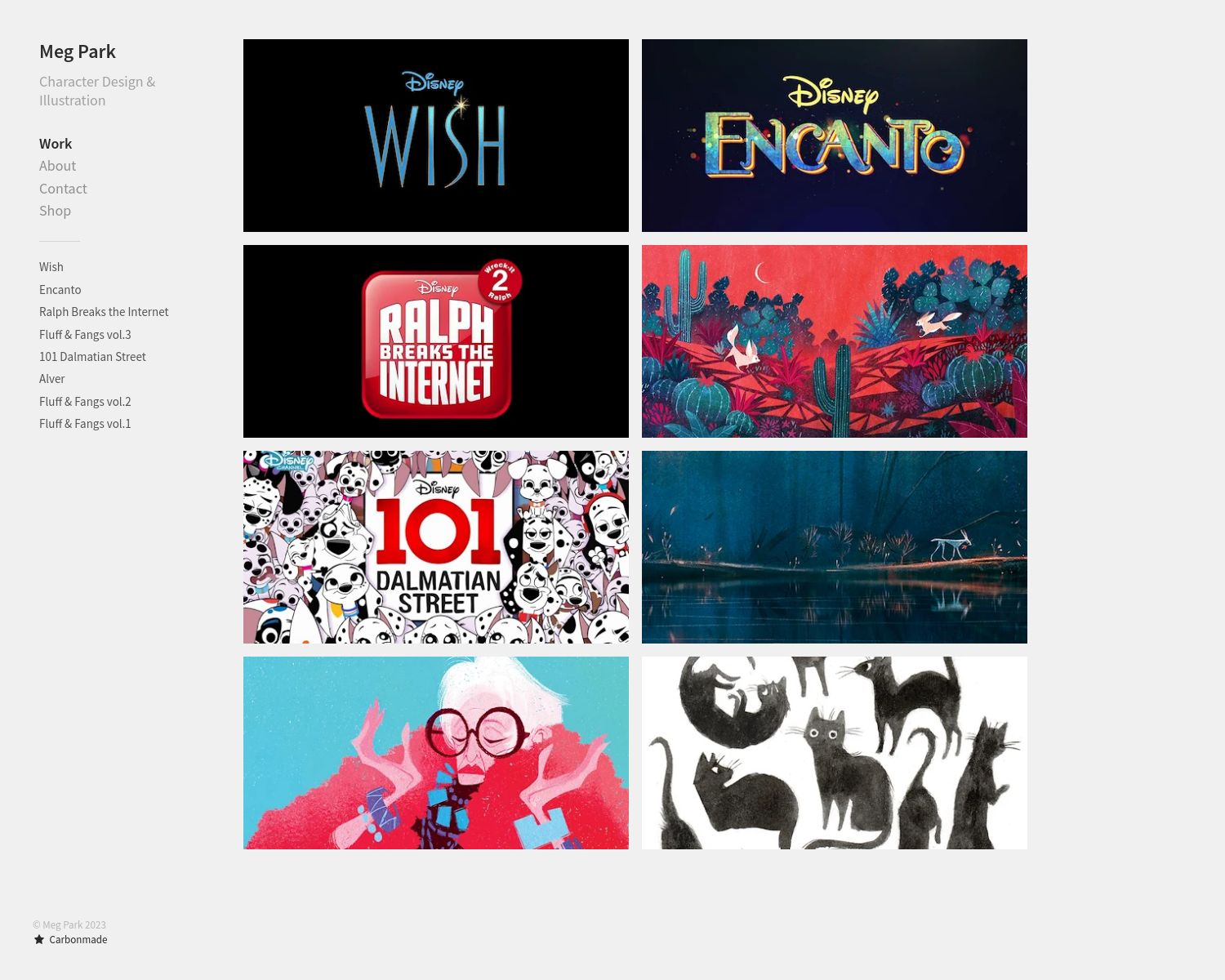
Gina Nguyen
Also based in the California Bay Area, Gina Nguyen is currently working with several companies on a slew of character design projects. While she has categories for her major projects, her portfolio is set up as a singular, scrollable page.
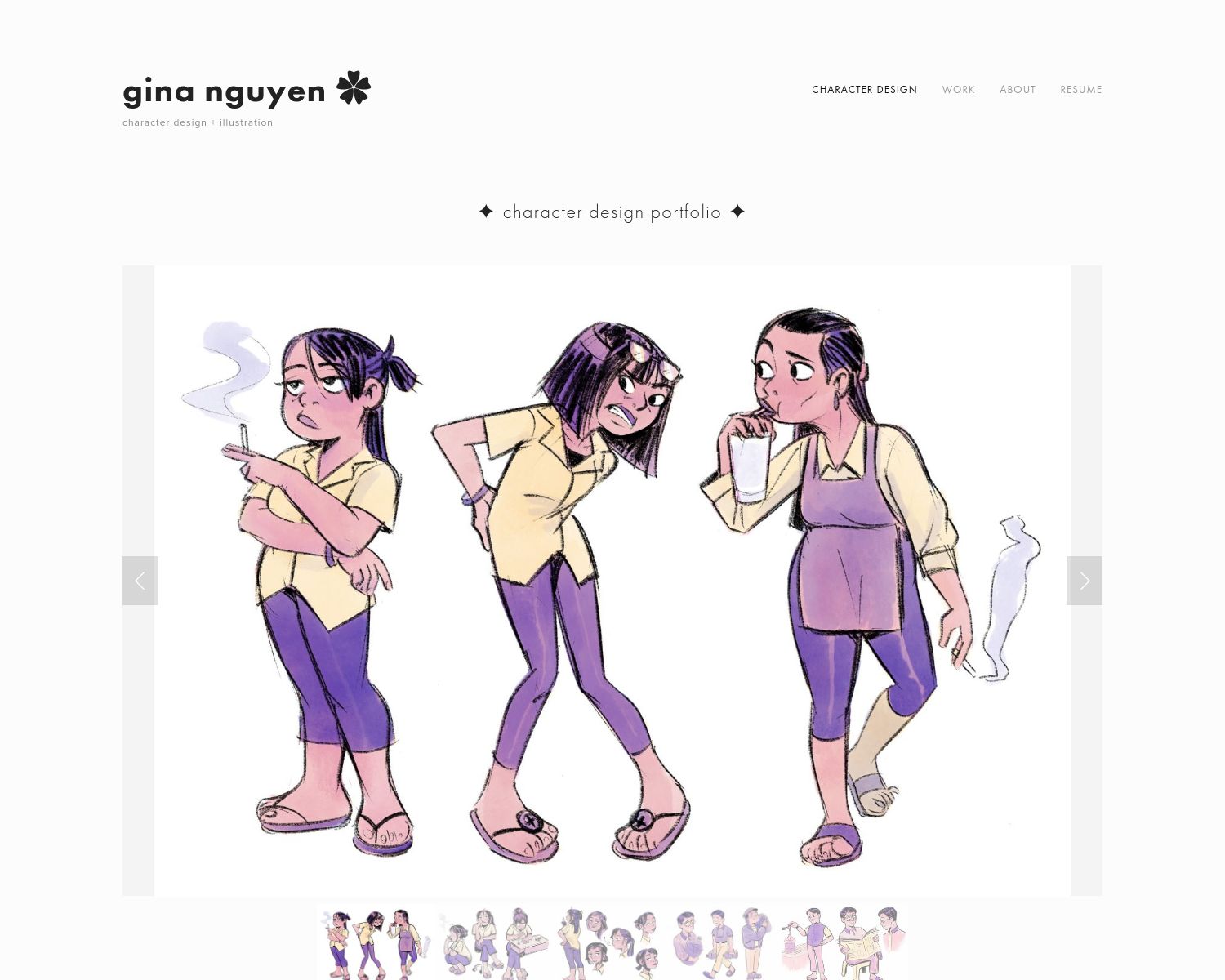
Shiyoon Kim
As a fun, different twist, Shiyoon's portfolio opens with a video. This is a great way to show that you have a diversified set of skills, sending a message that you invite being challenged and working on more complex tasks. Chances are that you're familiar with a project or two of his as well, as he's worked on everything from Big Hero 6 to Zootopia!
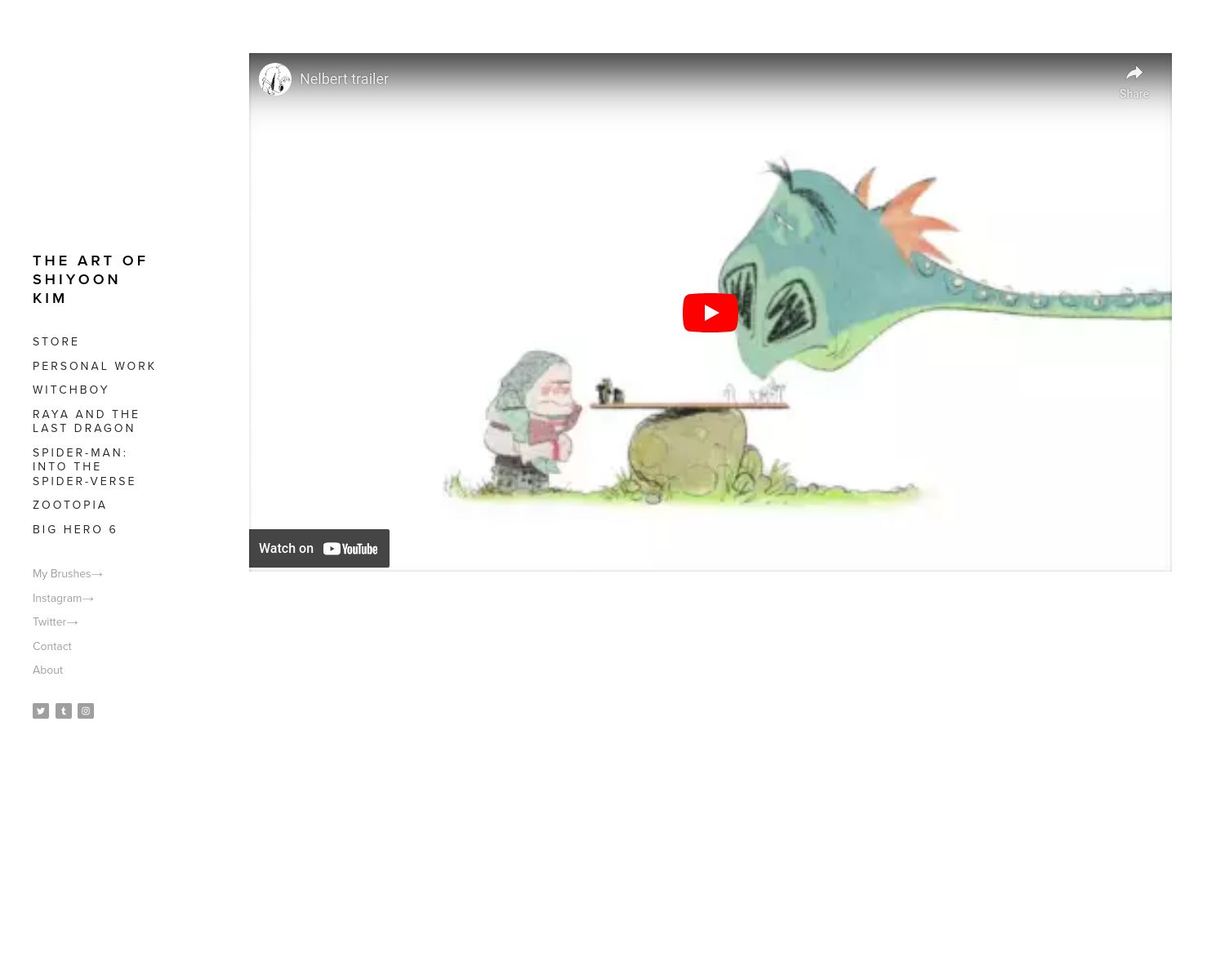
Other Pages To Add To Your Character Art Portfolio Website
While your actual character design pieces are imperative to include, you also need to add a few more bells and whistles to your website. Here are the two most important pages to include:
About: You can't just sell what you're creating; you also need to learn to sell yourself! Use your About page as an opportunity to share your story with your audience. Include details about how you've learned to adapt and overcome challenges and share intimate parts of your creation process.
Contact: This seems negligible at the moment, but later on, you'll certainly wish you had added a clear, bold contact page. It seems so simple, but that's also why it's so easy to forget. People shouldn't need to research how they can reach you!
Distributing Your Character Design Portfolio
You've created a brilliant portfolio website. You've shown how strong your styles are, and you've paid close attention to your visual development. And now... what? Unfortunately, you can't just sit and wait for traffic to arrive. Now is the time to distribute and advocate like crazy!
While you should always keep a close eye out for job listings, it's equally important that you take the process into your own hands by creating a master list of all of your dream agencies, clients, and positions and begin pitching away! Getting the word out that you're ready for work is absolutely worth the time it takes. Don't bombard people, of course, but hearing a "no" is better than never giving it a shot!
Start Building Your Character Art Portfolio Today!
Now that all of the tools and solutions are at your disposal, it's time to put them into action. Imagine how far you'll go once you've actually put all of your hard work and effort into one place. Now's the time to get started on the character design career of your dreams. And, of course, we're here to help you put this plan into action.
Journo Portfolio prides itself on balancing ease of use and potential for customization, making it one of the best portfolio builders online. It's in the name, after all! Check out our complete list of features, and get started with your free account today.


